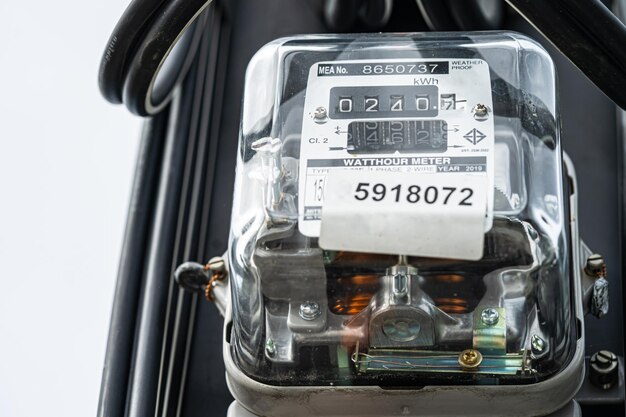Understanding Refrigerator Amperage: How Many Amps Does a Refrigerator Use?
When it comes to the reliable hum of your refrigerator, most of us consider it a key fixture in our kitchens without giving much thought to how it works. However, understanding your refrigerator's energy consumption is crucial, especially if you want to balance efficiency with performance. Let's dive into the details of refrigerator amperage, exploring what it means for your energy use and how you can optimize efficiency without sacrificing food freshness.
🌟 Why Does Refrigerator Amperage Matter?
Refrigerators are one of the most consistent consumers of electricity in our homes. Since they run continuously, even a small step in reducing their energy use can translate to significant savings over time. Understanding the amperage of a refrigerator—a measure of electrical current—can help you estimate its energy consumption and make informed decisions about your household's energy use.
What is Amperage?
Amperage, or current, measures the amount of electric charge flowing per second. It's an essential parameter when evaluating any electrical appliance, as it directly relates to the energy that the device will consume. A higher amperage means more electricity is used, which can lead to increased energy bills.
Typical Amperage of Refrigerators
Most modern refrigerators typically draw between 3 to 5 amps and often spike to around 15 amps when the compressor kicks in. The exact amperage might vary depending on the size, model, and features of the refrigerator. Full-sized modern refrigerators are generally more efficient than their older counterparts due to advances in technology and energy-saving designs.
💡 Key Factors Affecting Refrigerator Amperage
Your refrigerator's amperage can be affected by several factors, influencing its energy use.
Refrigeration Technology
Refrigerators have continued to evolve with newer, more energy-efficient technologies. Modern appliances often have features like variable-speed compressors, which adjust their power usage based on demand, reducing overall energy consumption.
Size and Capacity
Larger refrigerators typically require more energy. This doesn't always translate directly to double the amperage for double the size, thanks to efficiency improvements. However, a bigger model will generally mean increased energy use.
Age and Maintenance
An older refrigerator might draw more amperage due to wear and less efficient components. Regular maintenance, such as cleaning condenser coils or ensuring door seals are tight, can help maintain its efficiency.
Environment and Usage
External temperature, how often the door is opened, and the amount of food stored can impact how hard the refrigerator has to work. Keeping your refrigerator full helps maintain temperature balance and reduce energy usage.
📊 Measuring and Understanding Your Refrigerator's Amperage
To determine your refrigerator's amperage, you can follow a few approachable steps:
- Check the Nameplate: Most refrigerators have a nameplate indicating their electrical requirements, including amperage, usually located inside the fridge or on the back.
- Use a Clamp Meter: For a more accurate reading, a clamp meter can measure current by clamping around one of the power wires connecting the refrigerator.
- Consult the Manual: Your refrigerator's user manual can provide insights into its specifications, including amperage.
Calculating Energy Usage
Understanding amperage can give you deeper insight into your energy consumption:
- Formula: Power (in watts) = Voltage (in volts) × Current (in amps)
- For most homes using standard 120-volt outlets, a refrigerator drawing 5 amps would use: 120V × 5A = 600 watts.
- Over 24 hours, this equates to 14.4 kilowatt-hours (kWh).
Depending on your area's electricity rates, you can now estimate the daily cost of running your refrigerator.
🎯 Practical Tips to Optimize Refrigerator Efficiency
Understanding how to reduce the amperage and optimize refrigerator efficiency can lead to tangible savings.
- Set the Right Temperature: Keep your refrigerator between 37°F–40°F (3°C–4°C) for optimal efficiency.
- Keep Coils Clean: Dirty coils can impede efficiency. Vacuum them every six months.
- Ensure Seals are Tight: Check the door gasket for leaks to prevent cold air from escaping.
- Position Away from Heat Sources: Keep refrigerators away from ovens, dishwashers, and direct sunlight.
- Limit Door Opening: Reduce the amount of time the refrigerator door is open to retain cold air.
- Consider Upgrading: If your refrigerator is over 10 years old, consider upgrading to an energy-efficient model.
🔍 Related Energy Use Insights
Understanding how many amps a refrigerator draws can lead to broader considerations around your household's energy efficiency. Here are a few areas to consider:
Household Energy Audit
Conducting a home energy audit can identify other areas in your home where energy efficiency can be optimized. This can include upgrading to energy-efficient appliances, improving insulation, and switching to LED lighting.
Smart Appliances
Investing in smart appliances that can be monitored and controlled remotely allows for more dynamic energy management. Many modern refrigerators come with features that allow you to monitor energy use and adjust settings for optimal performance.
Renewable Energy Sources
For those committed to reducing their environmental impact, exploring renewable energy solutions such as solar panels can complement your home's energy use strategy. By generating your electricity, you can offset the energy consumption of appliances like refrigerators.
📌 Quick Takeaways
Here are some essential takeaways to keep in mind when considering your refrigerator's energy use:
- Refrigerator Amperage: Most are in the range of 3-5 amps; knowing this helps you estimate energy use.
- Energy Efficiency: Ensuring efficient operation through maintenance and correct usage can significantly cut down energy bills.
- Upgrading Appliances: Newer models offer superior energy efficiency, which can be a long-term cost saver.
By understanding your refrigerator’s amperage and implementing energy-saving strategies, you can optimize your home’s efficiency and reduce your carbon footprint, all while keeping your food cool and fresh.
